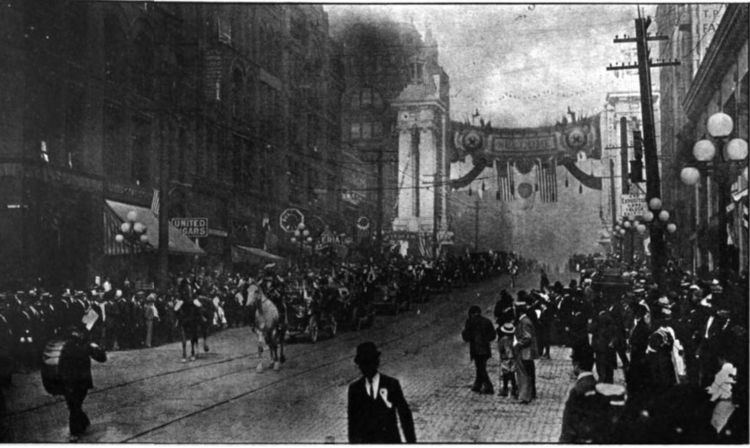 | ||
There is a population of Japanese Americans and Japanese expatriates in Greater Seattle.
Contents
History
In the mid-1880s a wave of immigration came from Japan to Seattle. Japanese came because Chinese were prevented from immigrating due to the Chinese Exclusion Act. A Japantown was developed, and Japanese became involved in the local economy. White businesspersons opposed to Japanese settlement formed the Anti-Japanese League in 1919.
After the 1941 attack on Pearl Harbor, ethnic Japanese in Seattle were sent to concentration camps. After an initial internment at Camp Harmony in Puyallup, Washington, about 7,000 Seattle-area persons of Japanese ancestry were forced to leave the Seattle area to go to the Minidoka Relocation Center in Idaho, while another 1,000 from the Seattle area went to other camps. Members of the Japanese community lost their businesses and residences. 450 students of the University of Washington were forced to leave the university due to their internment.
As the war ended, residents were allowed to return, initially staying in churches, other persons' residences, and the Seattle Japanese Language School building as they recovered from the effects of internment. Japanese Seattleites who were located at Minindoka, which was renamed the "Hunt Camp," named the school the "Hunt Hotel." The Nikkei Heritage Association of Washington started the "Omoide" education program to memorialize the incarceration of the Japanese people. In 2008 UW held an honorary graduation ceremony (The Long Journey Home) for the Japanese who had been their studies cut short, with 200 former students, most of whom were in their 80s at the time, and family members of former students present. Tetsuden Kashima, an ethnic studies professor of the university, presented the degrees.
Geographic distribution
As of 2000 many ethnic Japanese in the Seattle area live in the Eastside region. That year 70% of the employees of the members of the Japanese business association Sunju Club, according to the organization's figures, resided in that region. 7,829 ethnic Japanese reside in Seattle alone in 2010 while a total of 20,652 ethnic Japanese reside in King County alone.
Institutions
Kip Tokuda, who served as a representative in the Washington State Government, had worked to build the Japanese Cultural and Community Center of Washington (JCCCW; ワ州日本文化会館 Wa-shū Nihon Bunka Kaikan).
Densho is a nonprofit organization based in Seattle, Washington, which collects video oral histories and documents regarding Japanese American internment in the United States during World War II.
Economy
By the 1930s farms owned by Japanese had produced about 75% of the produce generated in the Seattle area. This included farms in Bellevue and the White River Valley. The Pike Place Market was the point of sale of some of the produce.
Early Japanese settlers worked in coal mines, canneries of salmon products, railroad construction areas, and sawmills.
Uwajimaya has its headquarters in Seattle.
Media
North American Post is the region's Japanese newspaper.
Education
The Seattle Japanese School is a supplementary Japanese school, designated by the Japanese Ministry of Education (MEXT), which holds its classes in Bellevue.
The Japan-America Society of the State of Washington (JASSW; ワシントン州日米協会 Washington-shū Nichibei Kyōkai) operates the Seattle Japanese Language School (JLS) in Seattle. It was established in 1902, making it the continental United States's oldest Japanese language school.
Nihon Go Gakko in the pre-World War II era served as Tacoma's Japanese language school.
In the period prior to the 1940s internment of Japanese Americans, Broadway High School had the highest percentage of Japanese Americans of all Seattle high schools.
Religion
Buddhist temples include Dai Bai Zan Cho Bo Zen Ji and the Seattle Buddhist Church.
Recreation
The oldest judo dojo in the United States is the Seattle Dojo.
The Seattle Japanese Garden is located in the Madison Park neighborhood. Kubota Garden is a Japanese garden in the Rainier Beach neighborhood of Seattle, Washington
The Nippon Kan Theatre was a former Japanese theater.
